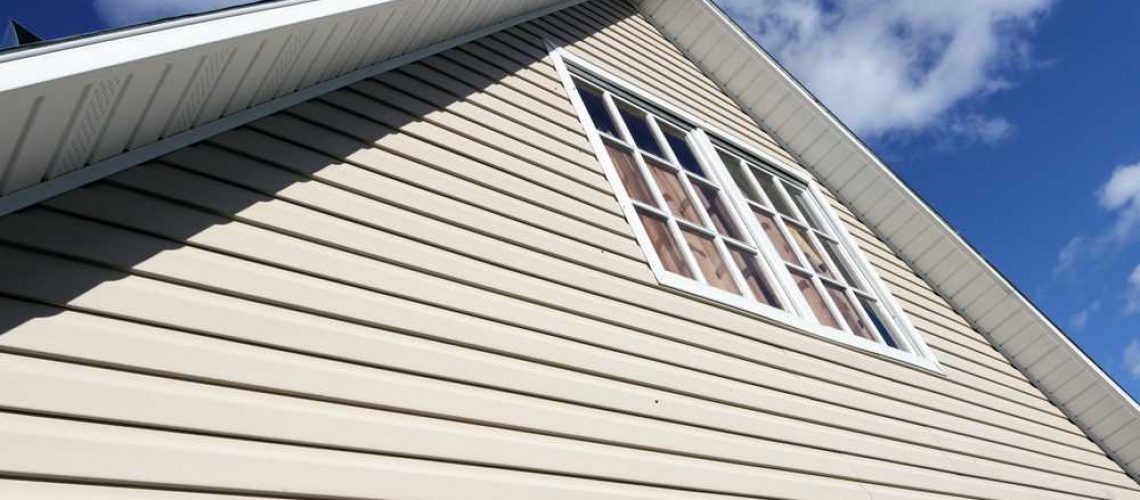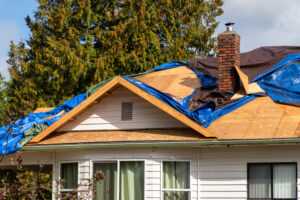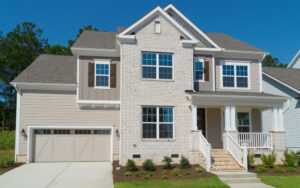Vinyl siding is a durable plastic material used for weatherproofing, insulating, and decorating the exterior of a home or building. It is installed in planks and has a painted wood-like appearance, available in many different colors. If you’re looking for the best siding material for your next home upgrade, explore the benefits of vinyl siding below, as well as some style and color ideas to choose from.
Benefits of Vinyl Siding
Long-lasting
Vinyl siding is still the top choice among homeowners for its affordability and durability. Made from polyvinyl chloride, it is essentially water-resistant, which means that it doesn’t absorb and lock in moisture as easily as some materials can, such as wood siding. This characteristic makes it last longer than other siding options.
Maintenance-free
Vinyl provides a beautiful, wood-like appearance for the exterior of your home without as much required upkeep. With vinyl siding, you won’t have to worry about material splitting, rotting, or being infested with pests. While it usually keeps dirt off well, it’s also relatively easy to clean if you need to. Most light stains or dust can be sprayed off with a garden hose, and you can also pressure wash the siding on low pressure.
Energy-efficient
Regular vinyl siding typically rates higher than other siding materials in terms of insulation. However, you can also opt to install insulated vinyl siding that has a further increased R-value (measurement of how well a type of building insulation prevents the flow of heat) of 2.0 to 4.0, compared to most siding materials that only fall below 0.20.
Soundproof
Well-insulated vinyl siding can reduce the effects of outside noise up to the 4000 Hz to 5000 Hz frequency ranges. Examples include high-pitched sounds from motor-operated equipment and vehicles. This makes it a particularly excellent option for people who live in busy neighborhoods or close to through-traffic roads.
Different Ways to Apply Vinyl Siding
There are many different ways to apply vinyl siding that mostly depends on your personal preference. It is important to note, however, that some applications do require more detailed installation than others. Here are some of the most common variations for applying vinyl siding:
Vertical Panels
Because of its groove orientation, vertical siding is easy to clean as it helps to direct water to the ground better. It can also give the appealing illusion of a taller house (think of the stripes rule for wearing clothes), as it tends to draw the eye from top to bottom. Vertical siding is a popular option among many modern or industrial-style homes.
Horizontal Panels
Horizontal paneling is the classic siding style that is most commonly used, as it helps both water and snow slide off easily. It also requires fewer installation steps than vertical siding. Horizontal vinyl siding can help make your home look wider than it actually is, especially if you employ a consistent color or two complementary colors all throughout.
Board & Batten
Also referred to as barn siding, board and batten siding is installed by joining vertical planks (the “boards”) with thin strips (the “battens”) to create an appealing pattern throughout the surface of the wall. The boards are considered the primary siding materials, while the battens are usually more for decorative purposes.
Beaded
Beaded vinyl siding is characterized by its use of horizontal planks that are finished with a decorative lip in order to provide the illusion of depth. It’s not as widely used as some others, but it’s a unique alternative to more traditional styles.
Clapboards
Also known as weatherboards, bevel siding, or traditional lap siding, clapboards use a siding method that overlaps horizontal boards over each other to produce a layered appearance. This setting allows water to easily slide off from the boards, as well as provides additional insulation.
Dutch Lap
Dutch lap vinyl siding can add visual appeal and shield your home from the elements by creating a shadow line effect. Dutch lap siding is notched at the overlap rather than being flat like standard siding boards. This allows it to cast more dramatic shadows than the previously mentioned traditional lap siding, providing a more noticeable overlay.
Shakes
You’ll notice shake siding right away, as it’s a style that’s made to look like shingles. Shake siding arranges tile-like vinyl squares in layers all over the side of a house, adding charm, warmth, and texture to its exterior walls.
Scallops
Like shake siding, scallop siding is arranged the same way, only the tiles are curved at the end, providing a “scalloped” look. It’s rare to see houses with full scallop siding as they are most often applied as aesthetic accents, usually around the second level of the house or near special windows.
Choosing the Best Color for Your Vinyl Siding
What Siding Color Adds Value to Your Home?
White siding is a popular choice for homes as it’s regarded to increase the home’s value. Arguably, it is a favored option by home buyers because white is a neutral, elegant color that goes well with most home designs. However, the only downside of truly white vinyl siding is that it can be a bit harder to maintain because it makes stains or dirt more noticeable.
What Siding Color Makes Your House Look Bigger?
Subtle or pale nature-toned colors like very light greens, blues, beiges, and grays are “easy on the eyes” and can make a home appear larger than it actually is. This is because light colors reflect more light than darker colors, making your home stand out more from a curbside view.
What Siding Color Fades the Least?
Light colors, as mentioned above, tend to fade the least as they’re closer to white than darker colors. Although, the color longevity of your vinyl siding really all depends on the manufacturer. Also, today’s quality standards for vinyl siding have significantly improved from what they were decades ago. Explore your siding options today with Freeman Exteriors.
The Best Vinyl Siding Installation in Champaign, IL
Freeman Exteriors offers the top vinyl siding installation services in Champaign, IL. Since our founding in 1988 as a family-run general contracting business, we’ve worked on hundreds of houses in the Champaign and Danville regions, gaining the experience and knowledge necessary to install siding to the satisfaction of our customers. Contact us today to receive an estimate for your next siding project.




